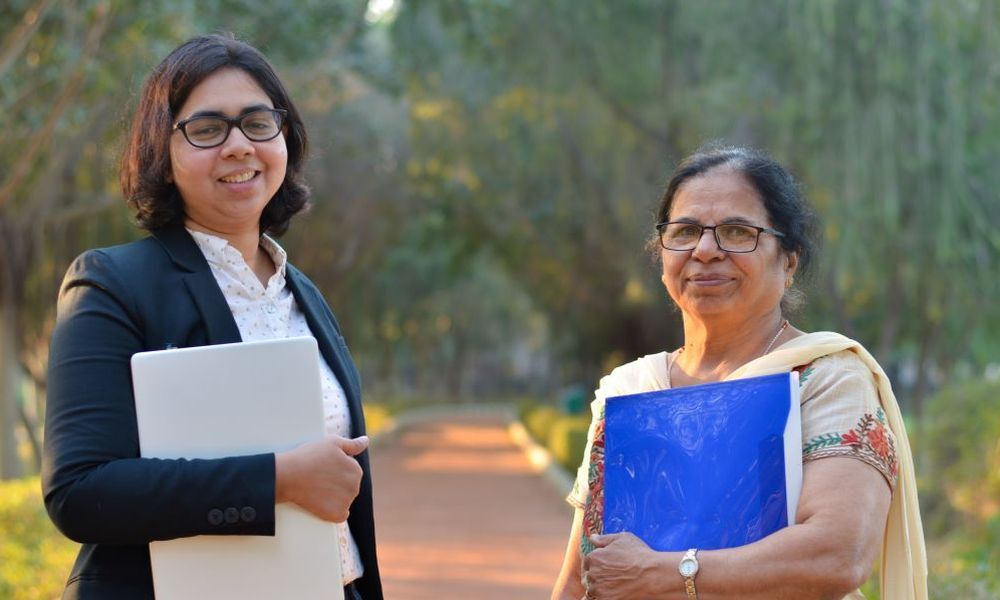Peer observation is an effective tool for improving teaching instructions and career development, says Deepali Dharmaraj.
One of the most exciting aspects of professional development in any profession and particularly in teaching is the wide range of activities one can pursue that support future career goals and practices. From undertaking training and obtaining qualifications to conducting action research, the choices are diverse. The opportunity of peer observation, however, is quite unique to the profession of teaching.
While observations conducted by a supervisor for the purpose of teacher evaluation are a common practice in schools, peer observation is an important improvement tool for teachers. Bell in his 2015 study describes peer observation in the context of teaching as a ‘collaborative, developmental activity in which professionals offer mutual support by observing each other teach; explaining and discussing what was observed; sharing ideas about teaching; gathering student feedback on teaching effectiveness; reflecting on understandings, feelings, actions and feedback and trying out new ideas.’
This article presents the case for peer observation as a vital technique for improving teaching. It describes some useful peer observation approaches that teachers can undertake and outlines how feedback can be integrated into a bespoke professional development plan.
The case for peer observation
In an environment of trust and mutual respect, peer observation can be a rich source of feedback on three main aspects of the teaching and learning process: teachers’ practice and pedagogy, students’ learning, and teaching content and materials. Jack Richards in 2005 wrote that peer observation has the power to reduce the gap between teachers’ view of their teaching and what is actually taught, thereby linking peer observation with reflective practice.
For an observer, it is an opportunity to learn from a peer and analyse student responses to particular pedagogies, especially when the same set of students are taught by both colleagues. The assessment for learning tasks help the observer and teacher to understand what teaching techniques are effective, enabling them to design future lessons based on the evidence and findings.
The process of peer observation
Ideally, peer observation involves a pre-observation discussion where two colleagues go through the lesson plan and identify and agree on areas to be observed. Next, the observation is conducted in physical or online classrooms. Subsequently, the observer and teacher have a post-observation discussion where they go through the areas identified for improvement. This format clarifies the purpose of the observation and enables the teacher to have agency in the process.
Making peer observation work
For peer observation to work, there are some prerequisites that need to be in place. Firstly, it is important for both colleagues to recognise the subjective nature of observation and the role that individual perspectives play in the process. With reference to the adjacent image, depending on how we approach it, we can either see an old lady or a young woman: both existing simultaneously. The same is true for observing lessons.
Moreover, due to the unpredictable nature of a lesson, multiple and not just two, simultaneous activities can occur at the same time and we cannot possibly observe everything. For example, if the students are working in groups, it’s not possible to observe every group all the time. It is important to select a few areas during the peer observation session.
Anxiety about being observed is understandable and at times may become one of the biggest obstacles to the efficacy of peer observation. Thus, it is vital for colleagues to trust each other.
Another factor that prevents practitioners from adopting this valuable form of professional development is the length of the process. Often teachers are so busy trying to complete the syllabus that it may become difficult to set aside time for peer observation.
There are three possible workarounds to this problem:
- Unseen observations: In this type of peer observation, the first and third components of the process are conducted. The observer and teacher have a discussion about the lesson and the areas for observation, for example, questioning techniques. The teacher delivers the lesson without an observer. After this, the colleagues meet again for a post-lesson discussion and reflect on the areas that were identified for exploration.
- Speed observations: The process is followed as usual, but instead of observing a complete lesson, the observer observes a portion of the entire lesson.
- Recorded observations: The first and third steps remain the same, but the lesson is recorded and then viewed together by the observer and teacher or separately. The teacher must secure permission from students before recording, and it is equally important to use a safe video-sharing platform. Audio recorded lessons are just as effective.
Embedding peer observation into practice
Post-lesson discussions are a vital aspect of the collaborative nature of this activity. It is necessary, therefore, that the exercise provides an opportunity for the observer to express the findings and learnings, and the teacher to reflect on the lesson. Feedback should be honest and supported by evidence and ideally also include something the observer has learnt from the teacher.
One must acknowledge the interconnectedness of professional development activities. Peer observation should inform an existing development plan for both teachers involved in the exercise and the school. For example, the reflection from the observation can be incorporated as an area of study or training or a particular event in the lesson giving rise to an action research project. Further, in order to create reciprocity, roles must be reversed. Swapping roles and arranging recurring observations will further ensure that this form of professional development is truly collaborative and mutually beneficial to both teachers involved.
A version of this article first appeared in the print magazine Teacher, distributed in India, in January 2021.
References
Bell, A., Mladenovic, R. (2008). The benefits of peer observation of teaching for tutor development. High Educ, 55, 735–752. https://doi.org/10.1007/s10734-007-9093-1
British Council. (n.d). Peer observation.
Teaching English. https://www.teachingenglish.org.uk/article/peer-observation
The University of Queensland. (n.d). https://itali.uq.edu.au/professional-learning/peer-observation
Richards J. C. & Farrell T. (2005). Professional Development for Language Teachers. Cambridge University Press. https://www.professorjackrichards.com/wp-content/uploads/Professional-development-for-language-teachers-Chap-6-Peer-Observation.pdf (PDF 136 KB)
Todd, M. A. (2017). Peer Observation as a Tool for Professional Development. Thesis. https://repository.stcloudstate.edu/engl_etds/84



